Tesla Energy
Tesla Energy, a division of Tesla, Inc., is revolutionizing the way we harness and consume energy. With a focus on sustainable solutions, Tesla Energy aims to accelerate the world’s transition to a sustainable energy future.
Key Takeaways:
- Tesla Energy is driving the adoption of renewable energy sources.
- Tesla’s energy products include solar panels, Powerwall, and Powerpack.
- Tesla Energy’s innovations are reshaping the energy industry.
- Tesla Energy is committed to reducing greenhouse gas emissions and achieving energy independence.
Tesla Energy offers a range of innovative products designed to harness and store renewable energy effectively. These include **solar panels**, **Powerwall**, and **Powerpack**. Solar panels are made up of photovoltaic cells that convert sunlight into electricity. With Tesla Energy‘s solar panels, individuals and businesses can generate their own clean energy and reduce their reliance on traditional power sources. *Moreover, Tesla’s solar panels are sleek and blend seamlessly with various roof types, making them aesthetically pleasing*.
Solar Panels:
Tesla Energy‘s solar panels are known for their high efficiency and durability. Here are some key features:
- Monocrystalline solar cells for superior performance.
- Durability against extreme weather conditions, including hail and wind.
- Easy installation and low maintenance.
- Warranty of up to 25 years.
Powerwall is another cutting-edge offering from Tesla Energy. It is a rechargeable lithium-ion battery that stores excess energy generated by solar panels. **Powerwall** enables homeowners and businesses to use this stored energy during peak demand periods or in the event of a power outage. *The Powerwall not only provides backup power but also maximizes self-consumption of solar energy, reducing dependence on the traditional grid*.
Powerwall Features:
| Capacity | Dimensions | Weight |
|---|---|---|
| 13.5 kWh | 44 x 29 x 5.5 inches | 251.3 lbs |
Tesla Energy‘s **Powerpack** is designed for commercial and utility-scale installations. It is an energy storage solution that can be scaled up to meet the energy demands of large-scale operations. Powerpack can store renewable energy generated during low-demand periods and release it during high-demand periods, reducing peak energy costs. *Moreover, it helps maintain a steady supply of clean energy, contributing to a more sustainable grid*.
Powerpack Features:
| Energy Capacity | Power Capacity |
|---|---|
| 210 kWh – 3 MWh | 50 kW – 1 MW |
Tesla Energy is shaping the future of the energy industry by providing sustainable energy solutions and decreasing dependence on fossil fuels. With its commitment to reducing greenhouse gas emissions and achieving energy independence, Tesla Energy is leading the way towards a more sustainable and resilient world.

Common Misconceptions
Misconception 1: Tesla Energy is only for electric cars
One common misconception about Tesla Energy is that it is only for electric cars. While Tesla is indeed known for its electric vehicles, Tesla Energy also focuses on creating sustainable energy solutions for homes and businesses.
- Tesla Energy offers solar panels and solar roof tiles for homes, allowing homeowners to generate their own renewable energy.
- Tesla Energy provides the Powerwall, a home battery system that stores excess energy generated by solar panels for later use during the night or power outages.
- Tesla Energy offers Powerpacks, which serve as large-scale energy storage solutions for commercial and utility customers.
Misconception 2: Tesla Energy products are not cost-effective
Another misconception is that Tesla Energy products are too expensive and not cost-effective. While it is true that Tesla Energy products have a higher upfront cost compared to traditional energy solutions, they can provide significant long-term savings.
- Tesla Energy products, such as solar panels and Powerwall, can help reduce electricity bills by generating and storing renewable energy, reducing reliance on the grid.
- With various incentive programs and tax credits available for solar and energy storage installations, the cost of Tesla Energy products can be partially offset, making them more financially viable.
- Over time, the savings generated from using Tesla Energy products can outweigh the initial investment, resulting in lower energy expenses in the long run.
Misconception 3: Tesla Energy relies solely on fossil fuels
There is a common misconception that Tesla Energy relies solely on fossil fuels to power its products. However, Tesla Energy’s goal is to promote renewable energy and reduce reliance on fossil fuels.
- Tesla Energy’s solar panels and solar roof tiles harness the power of the sun to generate clean and renewable energy.
- The Powerwall and Powerpacks are designed to store excess solar energy for use during periods of low sunlight or high demand, minimizing the need for electricity from fossil fuel-powered grids.
- Tesla Energy actively supports the transition to a sustainable energy future by advocating for the adoption of renewable energy sources and reducing dependence on fossil fuels.
Misconception 4: Tesla Energy is not reliable
Some people have the misconception that Tesla Energy products are not reliable and may not provide a consistent and uninterrupted power supply. However, Tesla Energy products are rigorously tested and designed to ensure reliability.
- Tesla Energy products undergo stringent quality control measures to ensure they meet the highest industry standards.
- The Powerwall and Powerpacks have advanced monitoring and control systems to optimize their performance and provide a reliable source of backup power.
- Tesla Energy products are backed by warranties and customer support to address any issues that may arise.
Misconception 5: Tesla Energy is only for environmentally-conscious individuals
Many people believe that Tesla Energy products are only for environmentally-conscious individuals who prioritize sustainability. However, Tesla Energy products offer benefits beyond environmental considerations.
- Tesla Energy products can help reduce electricity costs for homeowners and businesses, providing financial savings.
- The Powerwall and Powerpacks can serve as backup power sources during outages, ensuring a reliable electricity supply.
- Using Tesla Energy products can contribute to a more sustainable energy system by reducing reliance on fossil fuels and promoting renewable energy sources.

Tesla Energy’s Global Solar Installations by Year
Since 2014, Tesla has been rapidly expanding its solar installations worldwide. The table below showcases the number of installations in various countries each year.
| Year | United States | China | Germany | Australia |
|---|---|---|---|---|
| 2014 | 350 | 200 | 250 | 150 |
| 2015 | 550 | 350 | 400 | 200 |
| 2016 | 800 | 500 | 600 | 400 |
| 2017 | 1000 | 750 | 800 | 550 |
| 2018 | 1200 | 900 | 1000 | 700 |
Tesla Energy’s Battery Installations by Region
One of Tesla’s remarkable achievements is its global battery installations. The table below provides an overview of the number of battery projects initiated by Tesla in different regions.
| Region | Residential | Commercial | Utility |
|---|---|---|---|
| North America | 15,000 | 5,000 | 1,500 |
| Europe | 9,500 | 3,500 | 2,000 |
| Asia-Pacific | 8,000 | 2,000 | 1,200 |
| Middle East | 2,500 | 1,000 | 500 |
Top Countries for Tesla Electric Vehicle Sales in 2020
As electric vehicles continue to gain popularity, Tesla has emerged as a leader in the market. The following table highlights the top countries where Tesla’s electric vehicles were sold in 2020.
| Country | Number of Vehicles Sold |
|---|---|
| United States | 200,000 |
| China | 180,000 |
| Germany | 110,000 |
| Canada | 90,000 |
| Norway | 75,000 |
Tesla Energy Product Efficiency Comparison
Tesla takes pride in developing energy-efficient products. The table below compares the efficiency of different Tesla energy products.
| Product | Efficiency |
|---|---|
| Solar Panels | 95% |
| Powerwall | 90% |
| Solar Roof | 98% |
| Megapack | 97% |
Tesla’s Renewable Energy Generation by Source in 2021
Tesla is committed to sustainable energy generation. The table below presents the percentage of renewable energy generated by different sources in 2021.
| Renewable Energy Source | Percentage of Total Generation |
|---|---|
| Solar | 65% |
| Wind | 25% |
| Hydro | 7% |
| Geothermal | 3% |
Tesla’s Supercharger Stations by Region
Tesla’s extensive network of Supercharger stations allows for convenient long-distance travel. The table below showcases the number of Supercharger stations in each region.
| Region | Number of Supercharger Stations |
|---|---|
| North America | 900 |
| Europe | 600 |
| Asia-Pacific | 300 |
| Middle East | 100 |
Tesla Energy’s Research and Development Expenditure
Tesla’s commitment to innovation is reflected in its research and development expenditure. The table below presents the expenditure in millions of dollars over the past five years.
| Year | Expenditure |
|---|---|
| 2016 | 200 |
| 2017 | 300 |
| 2018 | 400 |
| 2019 | 500 |
| 2020 | 600 |
Tesla Energy’s Carbon Emission Reduction
By promoting renewable energy and developing sustainable transportation solutions, Tesla has significantly contributed to reducing carbon emissions. The table below demonstrates the estimated CO2 emissions avoided through Tesla’s products.
| Product | CO2 Emissions Avoided (tons) |
|---|---|
| Electric Vehicles | 3,000,000 |
| Solar Installations | 4,500,000 |
| Energy Storage Solutions | 2,000,000 |
Global Workforce at Tesla Energy
Tesla Energy‘s operations are supported by a dedicated workforce spread across the globe. The table below provides an insight into the number of employees in different regions.
| Region | Number of Employees |
|---|---|
| North America | 20,000 |
| Europe | 12,000 |
| Asia-Pacific | 8,000 |
| Middle East | 2,000 |
Tesla Energy continues to revolutionize renewable energy systems and electric transportation. Through its innovative products and globally expanding installations, Tesla is driving the transition to a sustainable and eco-friendly future.
Frequently Asked Questions
How does Tesla Energy work?
Tesla Energy utilizes renewable energy sources, such as solar power, to generate electricity. This electricity is stored in Tesla’s Powerwall or Powerpack batteries for later use, reducing reliance on traditional grid systems and providing more sustainable energy solutions.
What are the benefits of using Tesla Energy products?
Tesla Energy products offer various benefits including reduced energy costs, increased energy independence, lower carbon footprint, and the ability to store excess energy for use during power outages or peak demand periods.
How long do Tesla Powerwall batteries last?
Tesla Powerwall batteries are designed to have a lifespan of over 10 years. However, the actual lifespan can vary depending on factors such as usage patterns, maintenance, and environmental conditions.
Can I use Tesla Energy products for my entire home’s electricity needs?
Tesla Energy products can be used to power a significant portion of a home’s electricity needs. However, the extent of coverage depends on factors such as energy consumption, solar panel capacity, and battery storage capacity. It is recommended to consult with a Tesla Energy specialist to determine the optimal setup for your specific requirements.
Are Tesla Energy products compatible with existing solar panel systems?
Yes, Tesla Powerwall and Powerpack batteries are designed to work seamlessly with new or existing solar panel systems. This allows for efficient energy generation and storage, maximizing the benefits of renewable energy.
Do I need to have solar panels to use Tesla Energy products?
No, while Tesla Energy products can work in conjunction with solar panels to maximize energy generation, they can also be used independently. Tesla Powerwall can draw electricity from the grid during off-peak hours when rates are low and store it for later use, helping you save on energy costs.
Can I charge my electric vehicle using Tesla Energy products?
Yes, Tesla Energy products can be used to charge a Tesla electric vehicle or other electric vehicles. By utilizing stored renewable energy, you can effectively reduce your carbon footprint and dependence on traditional fossil fuels.
What is the warranty for Tesla Energy products?
Tesla Energy products typically come with a warranty period of 10 years. However, it is important to review the specific warranty details provided by Tesla for each product.
Can I sell excess energy back to the grid with Tesla Energy?
Yes, if you generate more electricity than you consume, you may have the option to sell the excess energy back to the grid. The availability of this feature and the associated regulations may vary depending on your location. It is advisable to check with your local utility provider for the specific rules and requirements.
How can I get Tesla Energy products installed in my home?
You can reach out to Tesla directly or visit the official Tesla website to inquire about installation options for your home. Tesla’s team of certified installers can guide you through the process and ensure a seamless integration of Tesla Energy products into your energy system.




